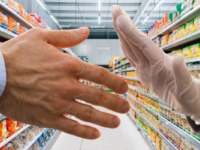 Supermarkets and grocery stores are the main sources of US adults for sugar-sweetened beverages and nutrient-poor discretionary foods, a new study reveals.
Supermarkets and grocery stores are the main sources of US adults for sugar-sweetened beverages and nutrient-poor discretionary foods, a new study reveals.
The new findings challenge the “food desert” hypothesis, which says that a lack of access to supermarkets and grocery stores in some communities worsens the obesity crisis by restricting people’s access to healthy foods. Supermarkets surpass convenience stores, vending machines, entertainment venues and fast-food and full-service restaurants as the primary source of empty calories consumed by adults in the US, according to the study.
“More than half of the sugar-sweetened beverages and two-thirds of discretionary foods are purchased in supermarkets and grocery stores,” said University of Illinois kinesiology and community health professor Ruopeng An, who led the study.
“Supermarket purchases of these items are about two to four times as large as all the other sources – fast-food restaurants, full-service restaurants, convenience stores, vending machines and other locations – combined.”
“It is true that supermarkets also are the largest source of healthy food,” An said. “But we can’t be naïve and think that people only purchase healthy food from supermarkets. They also buy all this junk food from supermarkets and grocery stores.”
The food desert hypothesis led the U.S. government to spend almost $500 million since 2011 to improve access to supermarkets and grocery stores in underserved communities. States and municipalities also have made efforts to increase the supply of healthy foods, offering financial incentives to build new grocery stores or to increase the amount of fresh food available in convenience stores and gas stations, for example.
Adding fruit and vegetables improves the diet, An said. “But from the standpoint of obesity prevention, it is only helpful if people replace junk food with healthy food,” he said. “We don’t see from our data that the presence of a supermarket has a preventive effect on people’s obesity or their junk-food intake.”
The study, described in the European Journal of Clinical Nutrition, looked at data from 4204 adults who reported their daily food intake in two, nonconsecutive 24-hour periods in 2011 and 2012. The data came from the National Health and Nutrition Examination Survey. The analysis found that nearly half (46.3 per cent) of US adults consume sugar-sweetened beverages and 88.8 percent eat discretionary foods such as cookies, pastries, ice cream, cakes, popcorn and candy on any given day.
The food desert hypothesis led the US government to spend almost $500 million since 2011 to improve access to supermarkets and grocery stores in underserved communities. States and municipalities also have made efforts to increase the supply of healthy foods, offering financial incentives to build new grocery stores or to increase the amount of fresh food available in convenience stores and gas stations, for example.















